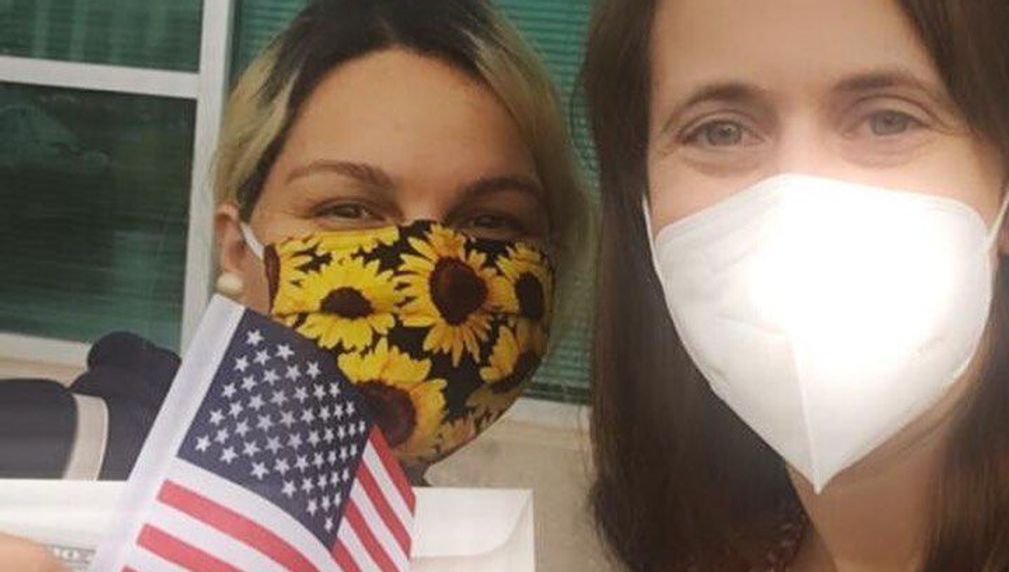Los Angeles Refugee Representation Project
Al Otro Lado’s Los Angeles Refugee Representation Project connects recently liberated asylum seekers and longer-term immigrant residents to necessary resources and support. Our holistic model blends legal and case management services with direct humanitarian support because we recognize that we cannot expect clients to engage in their legal cases, attend medical appointments, or navigate benefits unless and until their basic needs (food, clothing, shelter) are met.

In which areas of Los Angeles will you be directly working?
County of Los Angeles
What is the problem that you are seeking to address?
In January 2020, the State of Immigrants in LA County (SOILA) reported a population of 10+ million people and about 36 percent (or 3.6 million) residents were foreign born. While immigrants clearly make up a large portion of LA’s population, they remain an untapped civic force; in 2016, an estimated 768,000 individuals were eligible-to-naturalize (ETN) but had not yet done so, thus making them unable to vote or engage in other civic participation. One barrier to engagement is language; about 30 percent of all immigrant-headed households are linguistically-isolated, defined as having no member age 14 or older who speaks English at least “very well.” Regarding social support, LA has one of the largest immigrant populations in California but coverage in terms of immigrant-serving organizations is less robust compared to other counties: there are three such organizations per 100,000 individuals in LA County compared to ten organizations per 100,000 non-citizen immigrants in Alameda County.
Describe the project, program, or initiative that this grant will support to address the problem identified.
AOL’s approach to advancing equity for immigrant communities in service delivery is both individual and systemic. On an individual level, we believe in “meeting clients where they are,” whether literally (i.e. street-based outreach for homeless clients), or figuratively (i.e. employing trauma-informed treatment models for clients suffering from PTSD). Unlike most nonprofits, our holistic model blends legal and case management services with direct humanitarian support; we recognize that we cannot expect clients to engage in their legal cases, attend medical appointments, or navigate benefits unless their basic needs (food, clothing, shelter) are met. AOL moved our headquarters to Southeast LA because there are few immigration legal service providers in the area. Our staff travels throughout the County to meet clients and provide transportation to appointments along with benefit/service navigation in the following areas: legal (including fee assistance for application filing, fingerprints, expert witnesses, interpretation/translation, etc.), COVID testing and vaccination, DMV requirements for identification cards and driver licenses, voter registration, basic necessities including monetary assistance for food, utilities and rent, referrals to employment, mental and medical health providers, application assistance for public benefits (Medi-Cal, Cal Fresh, refugee cash program, etc.), information about ESL classes, filing taxes, opening bank accounts and building credit.
In what stage of innovation is this project, program, or initiative?
Expand existing project, program, or initiative
Approximately how many people will be impacted by this project, program, or initiative?
Direct Impact: 100
Indirect Impact: 1,000
Describe how Los Angeles County will be different if your work is successful.
We hope that our work will move LA County closer to being a more welcoming and inclusive place for all immigrants, as outlined in the SOILA’s recommendations for governments, businesses and organizations. We are investing in expanding civic engagement opportunities and strengthening the voice and power of immigrants by providing financial resources and legal assistance for the naturalization process. We are also committed to supporting immigrants’ mental and physical health through referrals and warm hand-offs to trusted service providers in order to reduce the barriers, fear and uncertainties our clients may have about accessing these benefits and services, especially with regard to potential consequences for their immigration cases. Ultimately, our goal is to ensure that our clients, and immigrants in general, can accomplish their goals and dreams and thrive in this place that we all call home.
What evidence do you have that this project, program, or initiative is or will be successful, and how will you define and measure success?
In 2020, we achieved the following in our clients’ immigration legal cases: 60 completed cases before USCIS, EOIR, BIA, and federal court; 13 asylum grants; 10 adjustment of status (green card) approvals; 6 federal court orders of release for detained clients. For clients who win asylum, our year-long case management plan tracks: Week 1: housing, transportation, essentials (phone, toiletries, clothing, covid safety kit) Month 1: work permit, Covid test, assess need for services (therapy, medical, educational) Months 1-3: enroll in public benefits (refugee cash assistance, insurance, food stamps), social security card, state ID, driver’s license, family petition (if needed), long-term housing, identify local immigrant friendly resources, get vaccines (if available in client’s location) Months 3-6: secure employment, maintain contact to confirm they are on track, taxes reminder Aftercare: communicate at least 1x/month to ensure clients are on track to “self-sufficiency”.
Which of the CONNECT metrics will you impact?
Immigrant integration